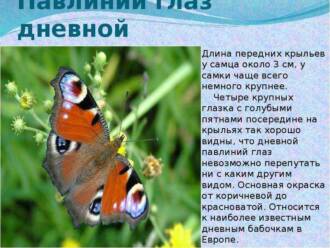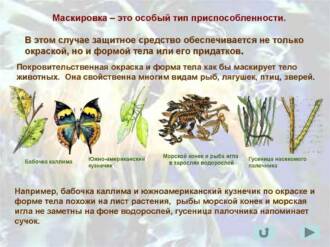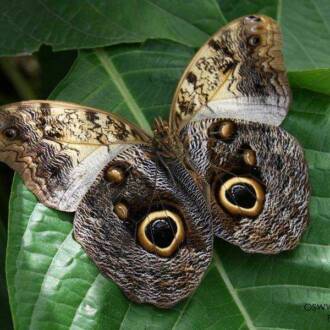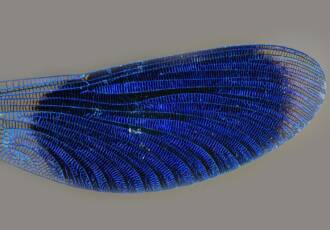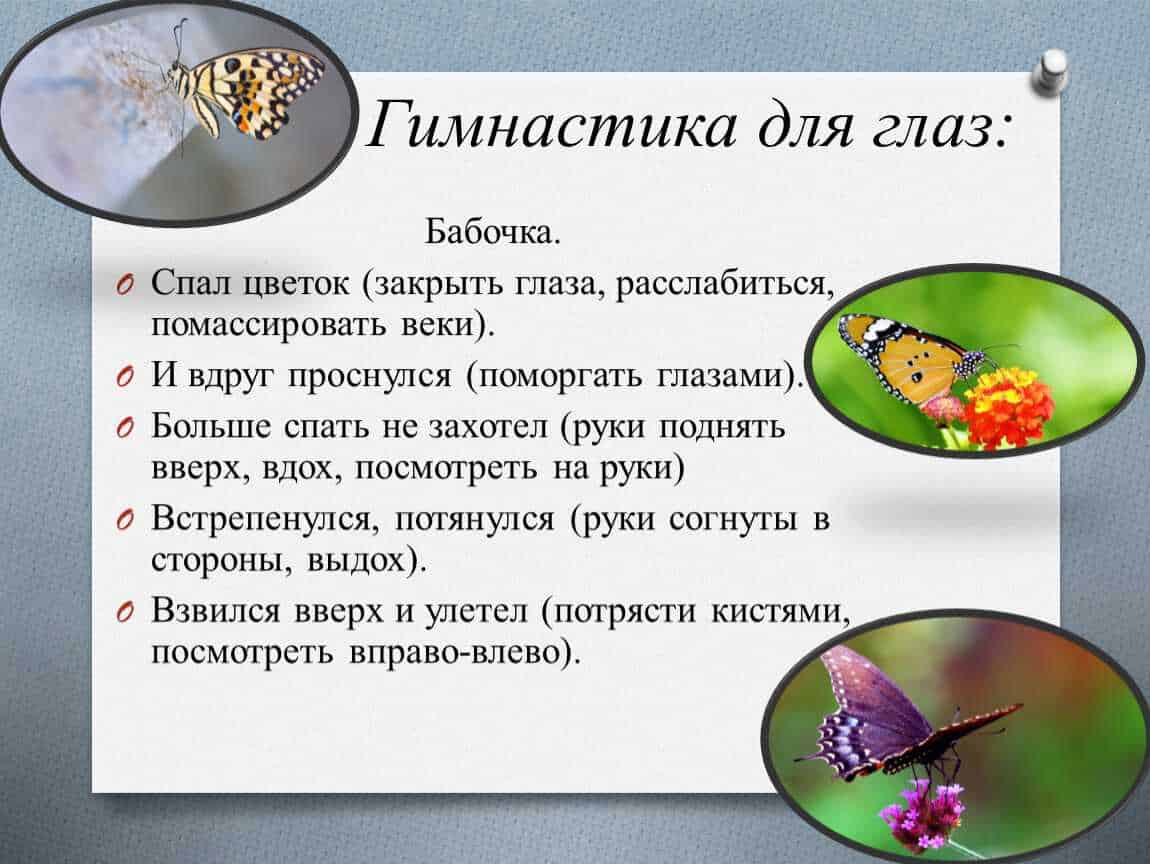
Butterflies are amazing creatures that amaze with their beauty and grace. They are among the most colorful and diverse insects on the planet. However, despite their beauty, butterflies face many dangers in their lives.
One of the biggest threats to butterflies is predators. Birds, lizards, spiders and other insectivores hunt butterflies, using their bright colors as a danger signal. To survive, butterflies have developed a unique defensive strategy - ocelli.
Ocelles are bright, round spots on the wings of butterflies that imitate the eyes of predators. This allows the butterflies to confuse their enemies and divert their attention away from their actual vulnerable body parts. The eyes come in a variety of sizes and colors, and they are an effective means of self-defense, protecting the butterflies from predators.
Dangers in nature
1. Weather phenomena
One of the main dangers that animals face in nature is weather. Heavy rains, thunderstorms and snow storms can threaten the life and health of various species. For example, flooding can destroy bird nests or inundate the habitats of aquatic animals.
Strong winds can damage trees and plants that are home to insects and other small animals. In addition, various weather events can lead to climate change and habitat loss for many species.
2. Predators

Predators are another danger that animals face in the wild. They may hunt and feed on other animals. Some predators, such as lions and tigers, hunt large animals, while others, such as wolves and foxes, may attack smaller animals and birds.
Predators play an important role in regulating prey populations, but they pose a serious threat to some species. For example, for many bird species, cats and dogs are dangerous, as they can hunt them and destroy their nests.
3. Habitat loss
Habitat loss is one of the main threats to animals in nature. Due to urban expansion and industrialization, many animals are losing their natural habitats and are forced to find new places to live and find food.
This can lead to competition between species and worsening living conditions for them. Some animal species cannot adapt to new conditions and disappear.
Thus, hazards in nature include weather events, predators, and habitat loss. To preserve the diversity of life on Earth, it is necessary to take measures to protect nature and preserve its biological diversity.
Dangers to butterflies in their habitat
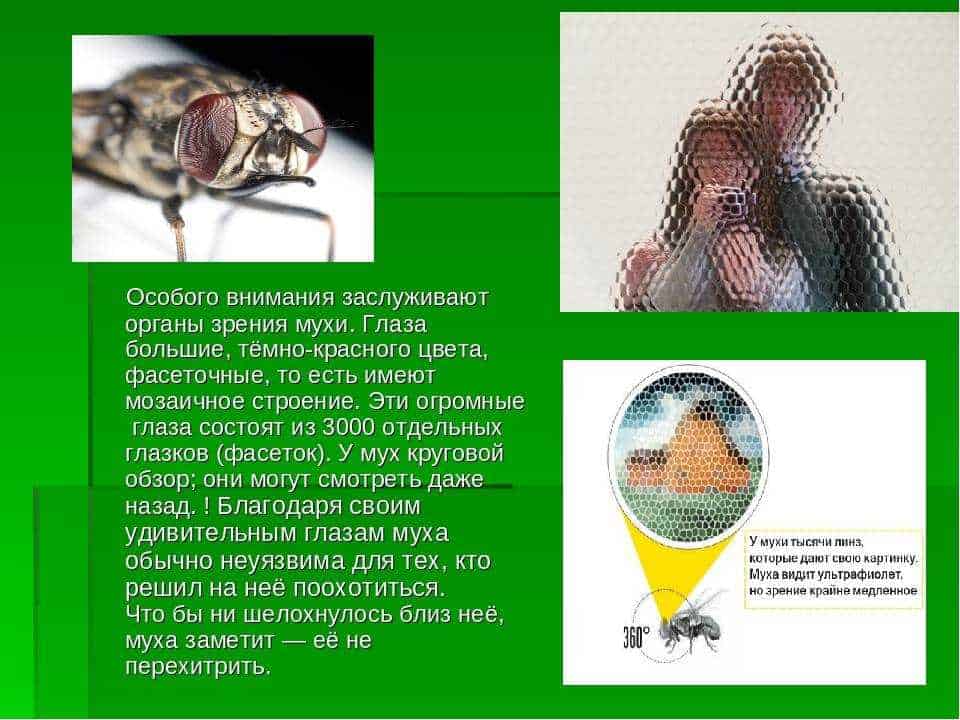
Butterflies, like most other living things, face various dangers in their habitat. They must fight for survival and adapt to unfavorable conditions in order to preserve their lives and continue to reproduce.
Changing of the climate
One of the main threats to butterflies is climate change. Global warming and changing weather conditions are affecting their habitat, which may lead to a decline in their numbers. Butterflies depend on certain temperature conditions and seasons for their development, and changes in climate can disrupt these conditions and lead to population declines.
Habitat destruction
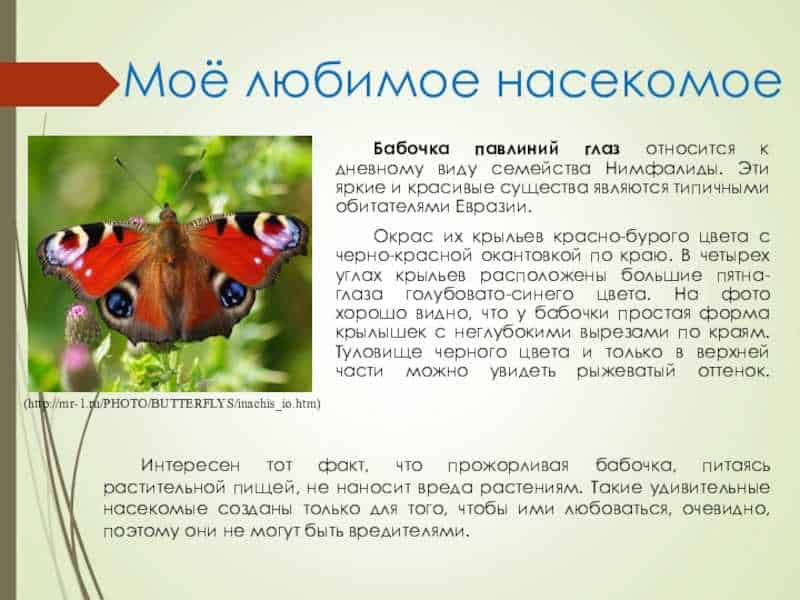
A major threat to butterflies is the destruction of their habitats. They depend on certain plants for their breeding and feeding. However, with the development of human civilization and the expansion of cities, many of the butterflies' natural habitats are being destroyed or converted into agricultural land. This leads to the disappearance of the plants that are essential for the existence of butterflies, and, accordingly, threatens their survival.
Use of pesticides
The use of pesticides in agriculture and gardening also poses a risk to butterflies. Pesticides can be toxic to butterflies, killing them or reducing their ability to reproduce. They can also destroy the plants on which the butterflies feed, eliminating their food sources and ultimately threatening the survival of these beautiful insects.
Competition with other species

Butterflies also face competition from other insect species. They compete for resources such as food and breeding sites. Competition can be especially intense in environments where space or resources are limited, creating additional challenges for butterflies to survive.
In general, butterflies face many threats in their habitat. Their survival depends on conserving and protecting their habitats, reducing the use of pesticides and combating climate change. This will allow them to preserve their beauty and diversity in our world.
Threat from predators
Butterflies are hunted by many predators in nature. One of these predators is birds. They actively hunt butterflies using their keen vision and quick reactions. Birds can easily catch a butterfly in flight and eat it. Therefore, butterflies develop various strategies to protect themselves from birds.
Other predators of butterflies include insectivores such as frogs and lizards. They can lie in wait for butterflies on the ground or in close surroundings. Having good stealth and quick reactions, they can easily catch a butterfly and eat it.
However, butterflies have their own methods of protecting themselves from predators. Some butterfly species have special patterns on their wings that make them unattractive to predators. These patterns can mimic the eyes of predatory animals or be brightly colored and repel predators.
In addition, some butterflies have the ability to release an unpleasant odor or taste when they sense danger. This signals to the predator that the butterfly is not desirable prey.
So, predators pose a serious threat to butterflies, but they evolve various defense methods to survive and continue their life cycle.
Human sabotage
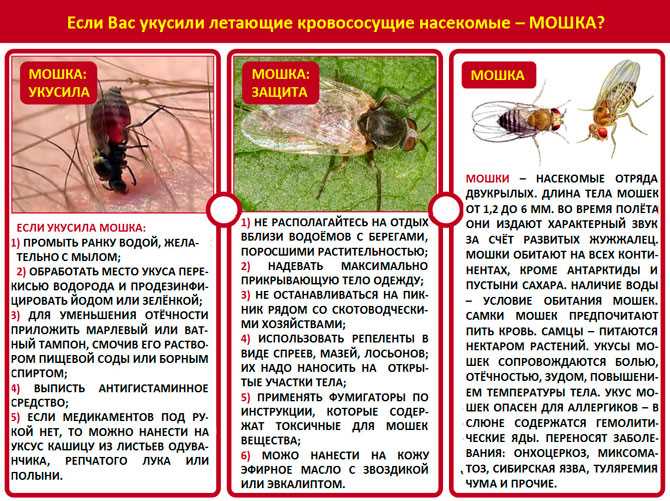
Environmental pollution
One of the main threats to butterflies is environmental pollution caused by human activities. Chemical pollution of air, water and soil has a negative impact on the life cycles and migration of butterflies. Toxic substances getting on plants that serve as food for caterpillars can lead to poisoning and death of the butterfly population. Moreover, environmental pollution can reduce soil fertility and reduce the number of plants, which negatively affects the abundance of food resources for butterflies.
Destruction of natural habitats

Human activity is also leading to the destruction of natural butterfly habitats. One of the main reasons is deforestation and the allocation of land for development or agriculture. Many butterfly species depend on certain types of vegetation, and the destruction of their habitats leads to population declines. In addition, the use of pesticides in agriculture can kill not only pests, but also beneficial insects, including butterflies.
Changing of the climate
Climate change is also a significant threat to butterflies. Global warming and extreme weather conditions caused by human activities may lead to a decline in butterfly abundance and diversity. Climate change may affect conditions for butterflies to breed, migrate, and forage. Higher temperatures, droughts and floods can destroy their habitats and reduce the amount of resources available.
Defense mechanisms
Butterflies have various defense mechanisms that help them survive in dangerous conditions. One such mechanism is mimicry. Some types of butterflies have colors and patterns on their wings that resemble dangerous predators or poisonous insects. This allows them to repel potential predators and remain safe.
Another defense mechanism is crypsis. Some species of butterflies have colors that allow them to blend in with their surroundings. They may be gray or brown in color, which allows them to hide in trees or rocks and avoid the attention of predators.
In addition, some butterflies have protective organs or structures. For example, some species of butterflies may have special scales on their wings that have sharp or poisonous spines. If a predator tries to grab such a butterfly, it may receive a bite and release it.
It is also worth noting that some butterflies have special glands that secrete toxic substances. If a predator tries to eat such a butterfly, it may become poisoned and release it. This allows the butterflies to survive and continue reproducing.
Crypsis
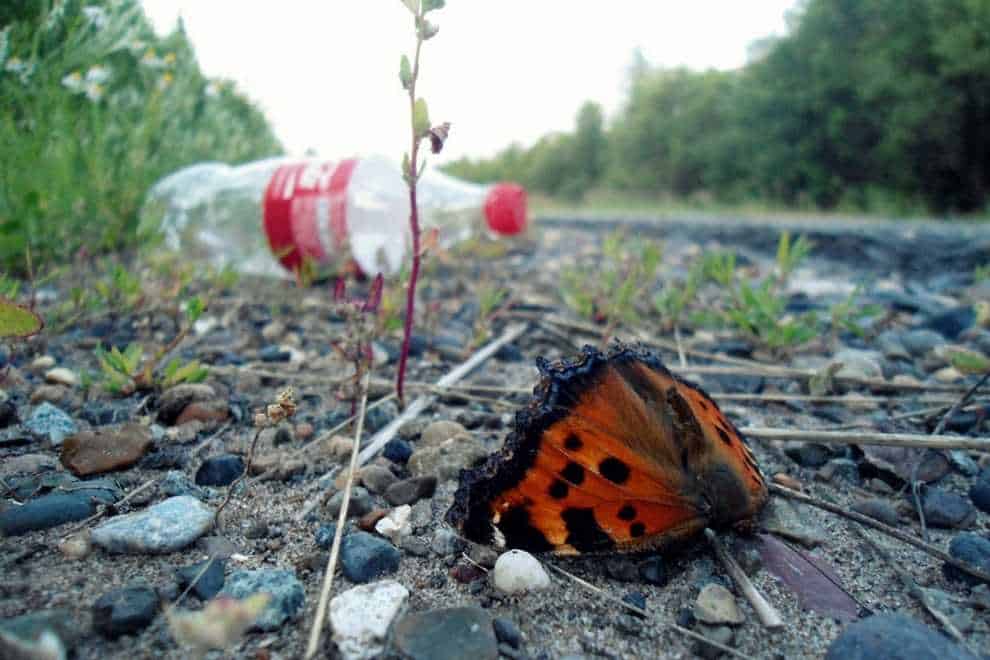
Crypsis is one of the survival strategies used by butterflies to protect themselves from predators. During crypsis, butterflies adopt a pose that makes them blend with their environment and become indistinguishable to their enemies.
One of the main features of crypsis is a change in the color and pattern of the wings of butterflies. They are able to adapt to their surroundings in order to become invisible or resemble other objects as much as possible. For example, some species of butterflies are able to imitate foliage or dry branches, which makes them indistinguishable to predators.
Crypsis is an effective defense strategy as it allows butterflies to escape danger and preserve their lives. However, not all butterflies are able to use crypsis as successfully. Some species require extra attention and knowledge of their environment to survive. For example, butterflies that live in forests with variegated vegetation must be able to imitate different types of plants in order to remain undetected by predators.
In general, crypsis is one of the important adaptive strategies of butterflies for survival. They can use their ability to change the color and pattern of their wings to blend in with their surroundings and avoid danger. Thanks to crypsis, butterflies maintain their lives and continue to contribute to the ecosystem.
Mimicry

Mimicry is a natural phenomenon that allows butterflies to survive by protecting themselves from predators. Thanks to mimicry, butterflies can pretend to be other objects or living beings in order to avoid being caught in the visual field of their enemies.
Types of mimicry:
- Leaf Mimicry – Some butterflies have wings that closely resemble plant leaves. Thanks to this, they can easily hide among the greenery and not be noticed by predators.
- Mimicry of other insects - Some butterflies have wings that mimic the appearance of other insects, such as wasps or bees. This allows them to deceive predators and avoid attack.
- Mimicry of poisonous butterflies - some harmless butterflies have colors and patterns on their wings that are very similar to poisonous butterflies. This makes predators think they are dangerous and they do not risk attacking them.
Mimicry is one of the most effective strategies butterflies use to protect themselves from predators. Thanks to this amazing ability, they can survive and continue to reproduce, preserving their species for many generations.
Repellent colors

Butterflies are some of the brightest and most beautiful creatures of nature. They attract attention with their various colors and patterns on their wings. However, not all butterfly colors serve to attract, some, on the contrary, scare away predators.
Many butterfly species have bright and contrasting colors such as orange, red or yellow. These bright colors serve as a warning to birds of prey and insects that the butterfly is poisonous or has an unpleasant taste. Thus, predators avoid them to avoid danger.
Some butterflies also have special patterns on their wings that resemble eyes. These eyes can be very realistic and bright. They serve to scare away predators, creating the illusion of a large and dangerous creature that could be dangerous to them.
The repellent colors of butterflies are one of the adaptations that help them survive in the harsh natural world. Thanks to these colors, butterflies can avoid attacks from predators and save their lives.
Roles of the peephole
The eyes on the wings of butterflies play an important role in their survival and protection. They perform several functions, helping butterflies adapt to their environment and avoid danger.
Protection from predators. The eyes on the wings of butterflies can imitate the eyes of large animals and frighten predators. This is one of the defense strategies against attacks, since many predators avoid attacking animals that seem larger and more dangerous to them.
Disguise and concealment. Eyes can also help butterflies to camouflage and hide from their surroundings. They can imitate eyes on leaves or branches, making them indistinguishable from their surroundings and helping to avoid detection by predators.
Repelling predators. When a butterfly feels threatened, it may open and close its wings, displaying its bright and conspicuous eyes. This can scare off a predator and give the butterfly time to escape or hide.
Attracting partners. The ocelli on butterfly wings may also play an important role in attracting breeding partners. Bright and contrasting eyes can attract the attention of other butterflies and help them find a suitable breeding partner.

